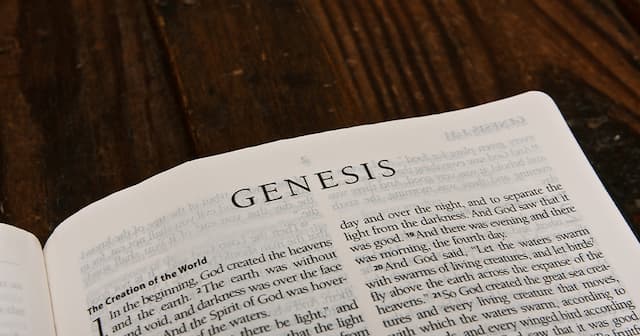10 Ways To Get Out Of The Worship Rut
Worship leaders—are your worship services feeling a bit rote? Looking for a way to inject a little bit of creativity and life into your corporate worship experience? After decades of leading worship and designing worship services, believe me—I’ve been there. To help you get out of the ruts, here are ten suggestions that might help you step out of the sameness (and a few caveats at the end):
1. Ditch the track. Instead, take your more familiar worship songs and rearrange them. A different musical arrangement of a familiar song can be a great way to breathe life into a tired crowd favorite. There are many ways to change a song arrangement. Change the tempo (e.g., take an uptempo song and play it as a slow ballad). Change the groove (e.g., add some hip hop swing to a straight 4/4 beat, or adopt a different genre altogether). Or change the lead instrument (e.g., lead a guitar-driven song on the piano or vice versa). Challenge your musicality and approach an old song in a different way.
2. Change Up Your Lineup. I’ve always been an advocate for variety, and that includes what makes up the band’s instrumentation. When possible, I’ll encourage alternate instrumentation—upright bass instead of electric bass, banjo or mandolin instead of electric guitar, WalkaBout Drum instead of drum kit, old-school Rhodes electric piano instead of ambient pads. (Hint: You can do this with tracks too!) Or you can change the entire band style (e.g., I’ve tried acoustic unplugged, jazz trio, synth pop, piano/cello, campfire-style, even drum circle.) In general, having different band configurations will not only create more variety, but it will wake up your congregation.
3. Start an Ambience Team. Could your worship space use some pizazz? The ambience of your sacred space does affect how people interact with one another and with God. If you have some people gifted in creating platform/stage design, all it takes is a little nudge (and some budget dollars) and you’d be surprised at what might happen. There are a lot of high tech ideas out there which are really cool, but I also like to encourage simple low-tech stage elements too (e.g., candles on stands or simple stage props). It keeps a fresh look visually. (More on sacred space here.)
4. Rearrange Your Room. Speaking of sacred space, have you ever considered how your room arrangement can affect your worship? For churches who have flat floors and chairs (not pews), consider revamping your seating arrangement. At my church, we have a variety of configurations that we use depending on the event and the intent. There’s seating in rows for more performance-type events. There’s an in-the-round configuration that we use for Sunday worship services (the band is on stage, but our seating is focused around a central communion table). And we’ll even gather around tables for other events, like conferences or community events. Each of these room arrangements affects the congregational worship in different and positive ways.
5. Intergenerational Worship. I’m a big advocate of intergenerational community, mission, and worship. Invite your Youth Worship Team to lead worship on Sunday morning. Or incorporate some of them into your “big church” team on a regular basis. Add some of their favorite worship songs into your Sunday morning rotation, and play them in their style. You can even add children to your worship with Hand Motions. The point is to represent the whole of the church together in worship, and make the children and youth feel like they have a place on Sunday morning.
6. Have A Listening Party. I’ll sometimes invite people in my church to a Listening Party. Gather some of your more musical folk together and invite them to bring potential worship songs. We’ll listen to the songs and have a dialogue on what makes a good worship song for our people. Some great songs have come out of these parties—songs I never would have thought of—and the participation creates greater ownership among your people. (What does make a good worship song? Hit the link!)
7. Break Up The Sermon. Occasionally, our preaching pastor will request that we break up the sermon into parts. In other words, the message is separated by other elements in the service. Segmenting the sermon into two or three discrete talks can be effective if the sermon topic lends itself to creating congregational responses after each segment. Typically in most churches, the response to the sermon is musical worship or a feature song, but here are five non-musical options you can incorporate to follow a message segment:
• Verbal Response: An open mic time for people in the congregation to express their thankfulness or prayers. This empowers the congregation and gets the focus off the stage.
• Creeds or Congregational Prayers: For example, the Apostle’s Creed, Nicene Creed, or Lord’s Prayer can be projected and recited by the congregation as a response to the message. Or you can incorporate a time of lament or confession.
• Prayer Walls (framed chicken wire set to the sides of the stage) where people are encouraged to write out their prayers and insert them into the frame.
• Testimonies or Interviews: You can break up a sermon by injecting a testimony or interview into it, using someone(s) whose story can illustrate the point in first person.
• Video Element: A movie film clip, worship media, or an original video element featuring photos related to the sermon set to music. For example, baptism videos are always powerful and inspiring.
8. Enhance Your Table. In many evangelical traditions, the act of communion is practiced simply as a commemorative rite. But it is so much more. The Table is perhaps the pinnacle of our worship experience, where we enter into community with one another and with the community of the Trinity—the Spirit inviting us into the intimacy of the Father with the Son. God meets us at the table with grace, forgiveness, hope. I encourage you to embrace the importance of the sacrament and become more creative in how you celebrate it. For example, create a Bread Making Team that bakes the bread used during communion (consider the creation of bread a holy act of worship). Write original Communion Liturgies that the congregation can participate in. Centralize the communion table on your stage, and change the decor with the liturgical seasons. Create an extended and unstructured time during worship where individuals can deeply interact together, serving the bread and wine to one another.
9. Paint During Worship. I don’t need to belabor this point. My blogpost, “Why Paint During Worship?,” written over ten years ago, continues to be one of the most popular, visited posts I’ve written. If you aren’t familiar with this, I encourage you to hit the link.
10. Pray. If your rut has more to do with the state of your heart than the music you’re leading, then none of these things will necessarily help. Believe me, with over three decades of ministry, I’ve been there. There have been times in my life when I have felt a little numb to the Spirit of God—which is quite inconvenient when one’s calling is to lead God’s people in worship, week after week. It’s in those times that I’ve worshipped more with my head than my heart. And I remind myself that—while this is certainly not ideal—honoring God through intellectual obedience and surrender is a valid soul posture that can still honor God. So pray and listen for the Small Still Voice. And do His work. And the Spirit of God will eventually lead you out of those dry times.
For more reading, check out Seven Things A Worship Leader Won’t Tell You or Engaging the Imagination in Worship.
[Banner Photo: A look at our current Communion Table. Inset Photo: Seating in the round for Sunday morning worship.]







